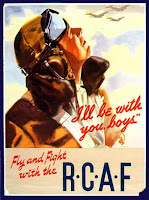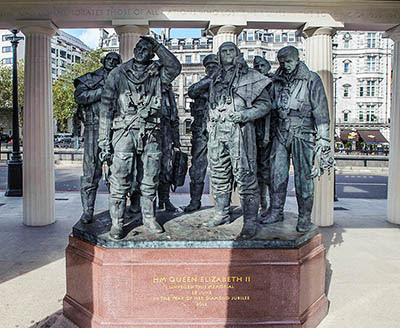February 8, 1945 - Bomber Command
From the Operations Record Book:
The Squadron stood by for a skylight operations, which was however cancelled at approx. 13.30 hrs presumably owing to adverse weather. 28 aircraft were later called for an attack on a synthetic oil plant at POLITZ 3 miles north of Stettin. Owning to mechanical defects developing at the last moment only 24 aircraft took off at approx. 19.00 hrs. The weather along the unfamiliar route fulfilled our worst suspicions, but on approaching the Reich the weather improved considerably and the target area was found to be practically free from cloud, consequently the flares and markers were dropped punctually and accurately. The target had been attacked two hours earlier and the fires started were still visible and our boys brightened them up considerably. Many explosions were seen and a particularly vicious one at 23.17 hrs which lit up the whole area and was said to have been the best ever. All our aircraft returned safely although one, F/O Parsons in "N" landed at Carnaby with defective hydraulics. Good photographs were obtained. F/O Lohrey and four members of his crew who baled out after their attack at Ludwigshaven on the 1st Feb returned to the Squadron.
RAF Bomber Command was launched in 1936 and through the course of World War II, over a million men and women served or supported the service as air crews, ground crews, air traffic control, the Women’s Auxiliary Air Force, auxiliary air transport and transportation services.
In the early days of the war, Bomber Command consisted of 23 operational bomber squadrons and 280 aircraft. This small force gave Britain the means to strike German military targets, but as these raids were conducted by day, Allied bombers were easy targets for enemy fighters. Bombers were used by night but only to drop propaganda leaflets.
Early night time raids on industrial targets of synthetic oil refineries and rail stations were largely ineffective as air bombers had difficulty identifying their blacked-out targets. As Bomber Command grew in strength, successes were offset by the increasing effectiveness of German night fighters and anti-aircraft fire.
In February 1942, Arthur Harris was appointed Commander-In-Chief, Bomber Command. The same year, a Pathfinder Force was launched to increase the accuracy of bombing raids. The Pathfinders used a variety of techniques depending on the weather conditions, with the intention of helping the waves of bombers that followed to make accurate drops.
By 1945, the RAF had grown to 108 squadrons with over 1,500 aircraft. Twenty-five of Bomber Commands squadrons were considered Article XV Squadrons, RCAF, Royal Australian Air Force (RAAF) and Royal New Zealand Air Force (RNZAF) squadrons under RAF control for the duration of the war. The RCAF supplied an entire Canadian bomber group (6 Group) of fifteen squadrons.
Raids against oil and communications eventually helped bring the German military to a halt. After Victory in Europe Day, May 8, 1945, Bomber Command took on Operation Manna, delivering 7,000 tons of food in 10 days over the western Netherlands. They also participated in Operation Exodus, repatriating over 70,000 prisoners of war from camps across Europe.


Comments
Post a Comment